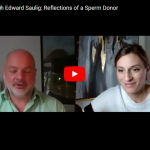By Wesley J. Smith, J.D., Special Consultant to the CBC
Consider this an addendum to my Weekly Standard piece on media bias in reporting the collapse of Geron’s embryonic stem cell project that came out on Saturday.
The LA Times finally got around to reporting the Geron collapse. Apparently, it had to figure out how to circle the wagons around embryonic stem cell research. Predictably, the story manages to once again omit even a mention of the more promising adult stem cells, with only a veiled reference to induced pluripotent stem cells, not to mention not describing the complex–and perhaps, intractable–problems keeping ESCR from widespread clinical application.
The baloney starts with the headline. From the story:
Money, Not Science, Thwarts Embryonic Stem Cell Therapy
Not so. The science problems may actually cause the money woes. ES cells cause tumors when implanted in animals because their proliferation is difficult to control. There are also concerns about potential tissue rejection. This isn’t to say that these problems cannot be surmounted, we just don’t yet know whether they ever will be. But the truth is that a failure of science to overcome these issues has indeed “thwarted” putting most ES cell products and approaches into human clinical application. Indeed, Geron’s product used a form of adult stem cells made from embryonic.
Reporter Eryn Brown furthers the wrong notion that ESCR is the primary hope for sick people by typically failing to even mention the many human clinical trials showing great promise using adult stem cells. And here is why selective reporting cause real harm:
People who had pinned their hopes on stem cells reacted with dismay. “It was like someone ripped my heart out,” said Sabrina Cohen, who was paralyzed in a car accident in 1992 and runs a research foundation in Miami.
But adult stem cell therapies have successfully restored feeling to long term spinal cord injured patients in human trials, never to be reported in the LA Times, at least not that I have seen. Moreover, Geron’s defunct trial only involved acute spinal cord injury patients. The media’s chronic failure to fully report the regenerative medical stories is blatant and continuing journalistic malpractice, adding to the despair of people desperately yearing for potential treatments of their serious diseases and injuries.
Here’s the rah-rah ending:
Even if economic and scientific barriers ultimately doom GRNOPC1, it would not be a death knell for embryonic stem cell medicine. Geron may not benefit from its years of investment and trailblazing on the regulatory front, Thomas said, but companies that carry the work forward will reap the rewards.
At the very least, that remains to be seen. As adult stem cell therapies roar forward in human application for widespread conditions, including spinal cord injury, heart disease, diabetes, eye conditions, MS, etc., ESCR as a clinical treatment modality could become mostly superflouous.
Moreover, there is certainly no guarantee that the scientific problems will ever be overcome. Very brilliant scientists are experiencing material difficulty overcoming the technical issues, despite billions of dollars investment in the USA alone. All the boosting in the world by a selective reporting, in-the-tank-media, won’t change that current fact on the ground.
Author Profile
Latest entries
 Sperm DonationMarch 15, 2022Venus Rising with Edward Saulig: Reflections of a Sperm Donor
Sperm DonationMarch 15, 2022Venus Rising with Edward Saulig: Reflections of a Sperm Donor BioethicsMarch 13, 2022Dr. C. Ben Mitchell: 2022 Ramsey Award Winner
BioethicsMarch 13, 2022Dr. C. Ben Mitchell: 2022 Ramsey Award Winner #BigFertilityMarch 10, 2022Documentary Explores One Woman’s Journey through Egg Donation
#BigFertilityMarch 10, 2022Documentary Explores One Woman’s Journey through Egg Donation BioethicsMarch 9, 2022Questioning the “Science” of the Gender Industry
BioethicsMarch 9, 2022Questioning the “Science” of the Gender Industry

